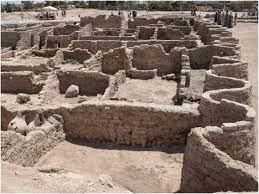In recent news, the discovery of an ancient city in Egypt has captured the attention of archaeologists and history enthusiasts alike. The city, believed to have been built over 3,000 years ago, is one of the largest and most well-preserved ancient cities ever discovered in Egypt.

The ancient city was discovered in the Luxor province, located in the southern part of Egypt, by a team of archaeologists led by Dr. Zahi Hawass, an Egyptian archaeologist and former Minister of Antiquities. The city was unearthed in the desert west of Luxor, near the Valley of the Kings, and is believed to have been built during the reign of King Amenhotep III, one of Egypt's most powerful pharaohs.
The city, which is believed to have been inhabited by workers and officials who worked on the royal tombs in the Valley of the Kings, is estimated to be around 3,000 years old, making it a contemporary of the famous city of Thebes, which was the capital of ancient Egypt during the New Kingdom period.
The discovery of the ancient city is considered to be one of the most significant archaeological finds in Egypt in recent years, as it provides new insights into the daily life and activities of the people who lived in ancient Egypt. The city is believed to have been a bustling metropolis with residential neighbourhoods, workshops, temples, and administrative buildings.
According to Dr. Hawass, the city covers an area of approximately 8 square kilometers, and it was surrounded by a wall that was up to 3 meters thick in some places. The city was divided into three main districts, one dedicated to housing, another to the administration, and a third to industry and crafts.
The city's residential district is believed to have housed many people, with houses arranged in a grid pattern and built using mud bricks. The houses had multiple rooms and courtyards; some had even been decorated with colorful wall paintings.
The city's administrative district contained several large buildings, including a palace, which is believed to have been used by King Amenhotep III himself, as well as administrative buildings and a large central square. The city's industrial district contained several workshops, where craftsmen would have worked on producing goods such as pottery, jewelry, and textiles.
One of the most interesting discoveries made by the archaeologists was a large bakery, which is believed to have been used to feed the workers who were building the royal tombs in the Valley of the Kings. The bakery contained ovens, mills, and storage jars, and it is estimated that it could have produced enough bread to feed several thousand people daily.